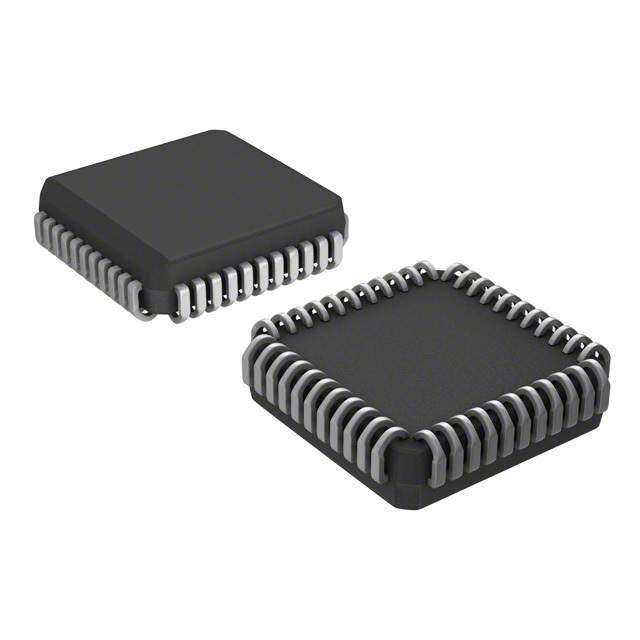ICGOO在线商城 > 集成电路(IC) > 嵌入式 - CPLD(复杂可编程逻辑器件) > ATF1508AS-10QU100
- 型号: ATF1508AS-10QU100
- 制造商: Atmel
- 库位|库存: xxxx|xxxx
- 要求:
| 数量阶梯 | 香港交货 | 国内含税 |
| +xxxx | $xxxx | ¥xxxx |
查看当月历史价格
查看今年历史价格
ATF1508AS-10QU100产品简介:
ICGOO电子元器件商城为您提供ATF1508AS-10QU100由Atmel设计生产,在icgoo商城现货销售,并且可以通过原厂、代理商等渠道进行代购。 ATF1508AS-10QU100价格参考。AtmelATF1508AS-10QU100封装/规格:嵌入式 - CPLD(复杂可编程逻辑器件), 。您可以下载ATF1508AS-10QU100参考资料、Datasheet数据手册功能说明书,资料中有ATF1508AS-10QU100 详细功能的应用电路图电压和使用方法及教程。
| 参数 | 数值 |
| 产品目录 | 集成电路 (IC)半导体 |
| 描述 | IC CPLD 128MC 10NS 100QFPCPLD - 复杂可编程逻辑器件 128 MC CPLD 10NS IND TEMP GRN |
| 产品分类 | |
| I/O数 | 80 |
| 品牌 | Atmel |
| 产品手册 | |
| 产品图片 |
|
| rohs | 符合RoHS无铅 / 符合限制有害物质指令(RoHS)规范要求 |
| 产品系列 | 嵌入式处理器和控制器,CPLD - 复杂可编程逻辑器件,Atmel ATF1508AS-10QU100ATF15xx |
| 数据手册 | |
| 产品型号 | ATF1508AS-10QU100 |
| 产品 | ATF1508AS |
| 产品目录页面 | |
| 产品种类 | CPLD - 复杂可编程逻辑器件 |
| 供应商器件封装 | 100-PQFP(14x20) |
| 其它名称 | ATF1508AS10QU100 |
| 包装 | 托盘 |
| 可编程类型 | 系统内可编程(最少 10,000 次编程/擦除循环) |
| 商标 | Atmel |
| 大电池数量 | 128 |
| 存储类型 | EEPROM |
| 安装类型 | 表面贴装 |
| 安装风格 | SMD/SMT |
| 宏单元数 | 128 |
| 封装/外壳 | 100-BQFP |
| 封装/箱体 | PQFP-100 |
| 工作温度 | -40°C ~ 85°C |
| 工作电源电压 | 5 V |
| 工厂包装数量 | 66 |
| 延迟时间 | 10 ns |
| 延迟时间tpd(1)最大值 | 10.0ns |
| 最大工作温度 | + 85 C |
| 最大工作频率 | 125 MHz |
| 最小工作温度 | - 40 C |
| 栅极数 | - |
| 栅极数量 | 3000 |
| 标准包装 | 66 |
| 每个宏指令的积项数 | 40 |
| 电源电压-内部 | 4.5 V ~ 5.5 V |
| 电源电压-最大 | 5.5 V |
| 电源电压-最小 | 4.5 V |
| 输入/输出端数量 | 80 |
| 逻辑元件/块数 | - |
| 逻辑数组块数量——LAB | - |
| 配用 | /product-detail/zh/ATF15XX-DK3/ATF15XX-DK3-ND/1008628 |


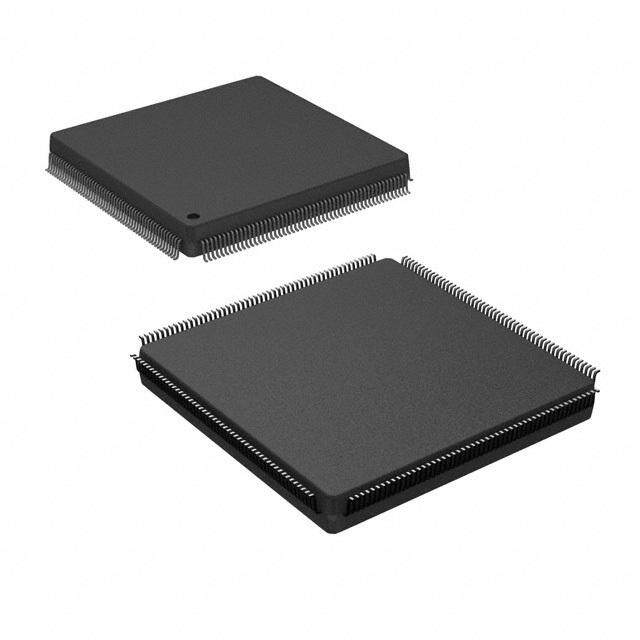
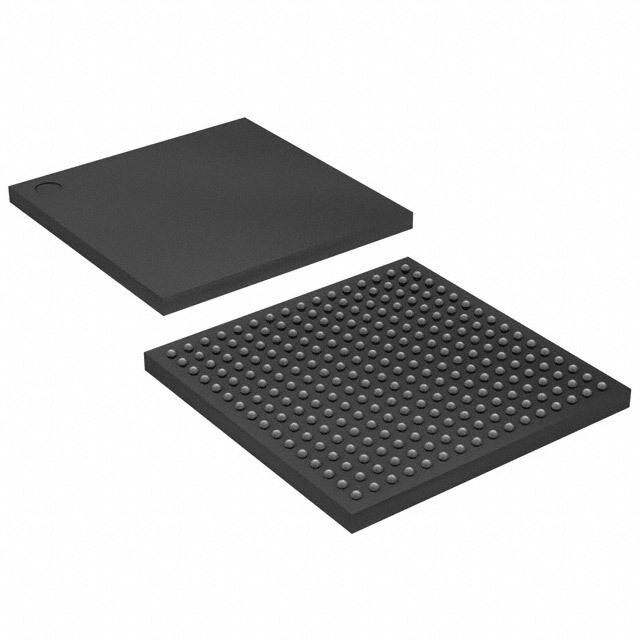
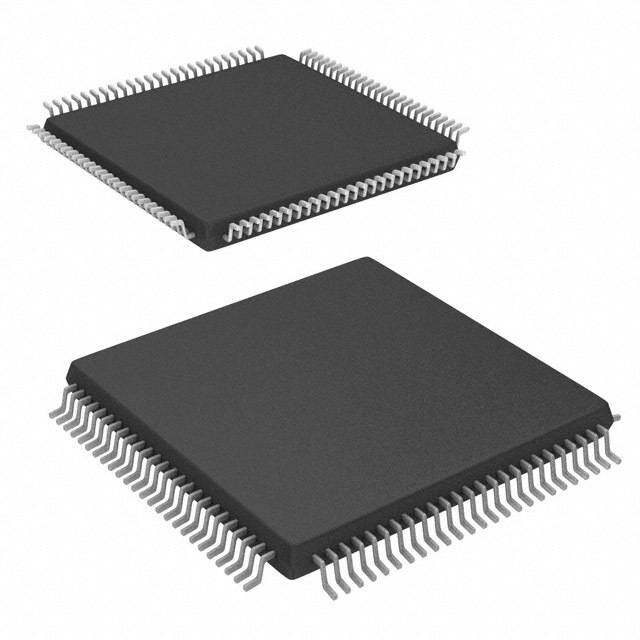





- 商务部:美国ITC正式对集成电路等产品启动337调查
- 曝三星4nm工艺存在良率问题 高通将骁龙8 Gen1或转产台积电
- 太阳诱电将投资9.5亿元在常州建新厂生产MLCC 预计2023年完工
- 英特尔发布欧洲新工厂建设计划 深化IDM 2.0 战略
- 台积电先进制程称霸业界 有大客户加持明年业绩稳了
- 达到5530亿美元!SIA预计今年全球半导体销售额将创下新高
- 英特尔拟将自动驾驶子公司Mobileye上市 估值或超500亿美元
- 三星加码芯片和SET,合并消费电子和移动部门,撤换高东真等 CEO
- 三星电子宣布重大人事变动 还合并消费电子和移动部门
- 海关总署:前11个月进口集成电路产品价值2.52万亿元 增长14.8%
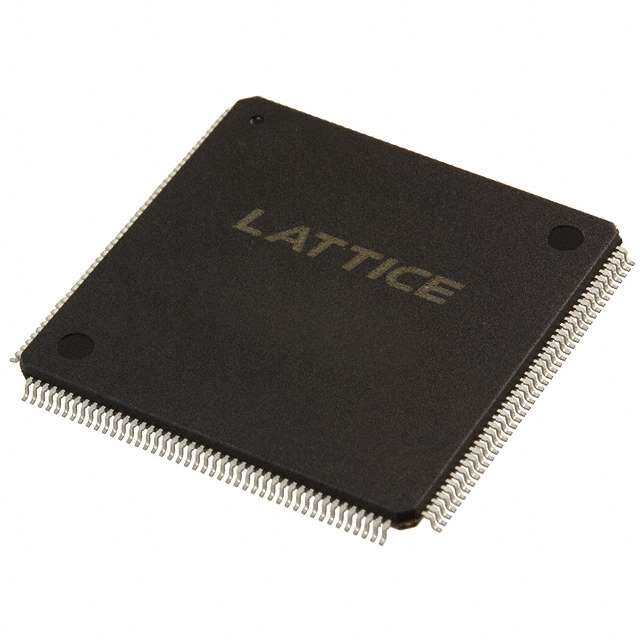

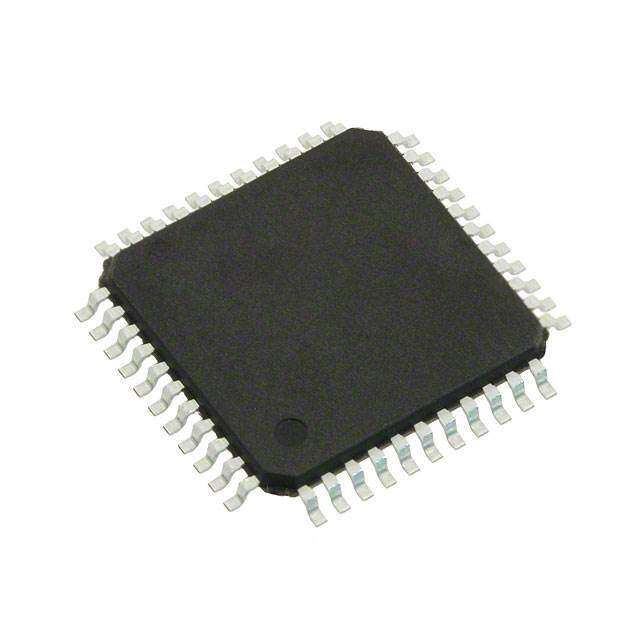
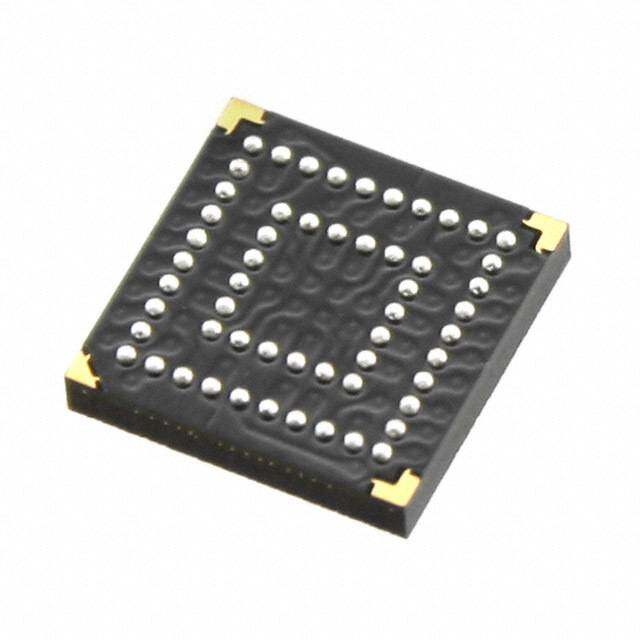
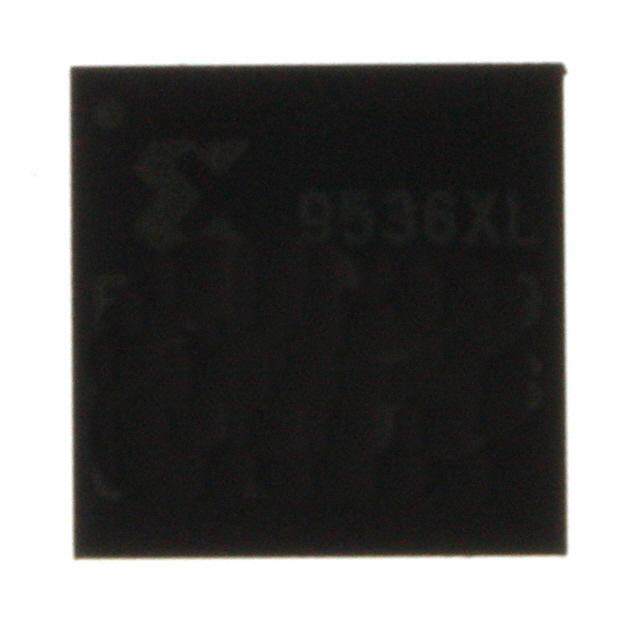

PDF Datasheet 数据手册内容提取
Features • High-density, High-performance, Electrically-erasable Complex Programmable Logic Device – 128 Macrocells – 5 Product Terms per Macrocell, Expandable up to 40 per Macrocell – 84, 100, 160 Pins – 7.5 ns Maximum Pin-to-pin Delay – Registered Operation up to 125 MHz – Enhanced Routing Resources (cid:127) Flexible Logic Macrocell High- – D/T/Latch Configured Flip-flops – Global and Individual Register Control Signals – Global and Individual Output Enable performance – Programmable Output Slew Rate – Programmable Output Open Collector Option EE PLD – Maximum Logic Utilization by Burying a Register within a COM Output (cid:127) Advanced Power Management Features – Automatic 10 µA Standby for “L” Version – Pin-controlled 1 mA Standby Mode ATF1508AS – Programmable Pin-keeper Inputs and I/Os – Reduced-power Feature per Macrocell ATF1508ASL (cid:127) Available in Commercial and Industrial Temperature Ranges (cid:127) Available in 84-lead PLCC, 100-lead PQFP, 100-lead TQFP and 160-lead PQFP Packages (cid:127) Advanced EE Technology – 100% Tested – Completely Reprogrammable – 10,000 Program/Erase Cycles – 20-year Data Retention – 2000V ESD Protection – 200 mA Latch-up Immunity (cid:127) JTAG Boundary-scan Testing to IEEE Std. 1149.1-1990 and 1149.1a-1993 Supported (cid:127) Fast In-System Programmability (ISP) via JTAG (cid:127) PCI-compliant (cid:127) 3.3 or 5.0V I/O Pins (cid:127) Security Fuse Feature (cid:127) Green (Pb/Halide-free/RoHS Compliant) Package Options Enhanced Features (cid:127) Improved Connectivity (Additional Feedback Routing, Alternate Input Routing) (cid:127) Output Enable Product Terms (cid:127) Transparent-latch Mode (cid:127) Combinatorial Output with Registered Feedback within Any Macrocell (cid:127) Three Global Clock Pins (cid:127) ITD (Input Transition Detection) Circuits on Global Clocks, Inputs and I/O (cid:127) Fast Registered Input from Product Term (cid:127) Programmable “Pin-keeper” Option (cid:127) V Power-up Reset Option CC (cid:127) Pull-up Option on JTAG Pins TMS and TDI (cid:127) Advanced Power Management Features – Edge-controlled Power-down “L” – Individual Macrocell Power Option – Disable ITD on Global Clocks, Inputs and I/O for “Z” Parts Rev. 0784P–PLD–7/05 1
84-lead PLCC 100-lead PQFP Top View Top View I/O/PD1 1211I/O10I/O9I/O8I/O7GND6I/O5I/O4I/O3VCCINT2INPUT/OE2/GCLK21INPUT/GCLR84INPUT/OE183INPUT/GCLK182GND81I/O/GCLK380I/O79I/O78VCCIO77I/O76I/O75I/O74 I/O I/O 1 100I/O99I/O98I/O97GND96I/O95I/O94I/O93VCCINT92INPUT/OE2/GCLK291INPUT/GCLR90INPUT/OE189INPUT/GCLK188GND87I/O/GCLK386I/O85I/O84VCCIO83I/O82I/O81I/O 80 I/O VCCIO 13 73 I/O I/O 2 79 I/O I/O/TDI 14 72 GND I/O/PD1 3 78 I/O I/O 15 71 I/O/TDO I/O 4 77 I/O I/O 16 70 I/O VCCIO 5 76 GND I/O/TDI 6 75 I/O/TDO I/O 17 69 I/O I/O 7 74 I/O I/O 18 68 I/O I/O 8 73 I/O GND 19 67 I/O I/O 9 72 I/O I/O 20 66 VCCIO I/O 10 71 I/O I/O 21 65 I/O I/O 11 70 I/O I/O 22 64 I/O I/O 12 69 I/O I/O/TMS 23 63 I/O GND 13 68 VCCIO I/O 24 62 I/O/TCK I/O 14 67 I/O I/O 25 61 I/O I/O 15 66 I/O I/O 16 65 I/O VCCIO 26 60 I/O I/O/TMS 17 64 I/O/TCK I/O 27 59 GND I/O 18 63 I/O I/O 28 58 I/O I/O 19 62 I/O I/O 29 57 I/O VCCIO 20 61 GND I/O 30 56 I/O I/O 21 60 I/O I/O 31 55 I/O I/O 22 59 I/O GND 32 54 I/O I/O 23 58 I/O 333435363738394041424344454647484950515253 I/O 24 57 I/O I/O 25 56 I/O I/OI/OI/OI/OI/OVCCIOI/OI/OI/OGNDVCCINTI/OI/O/PD2I/OGNDI/OI/OI/OI/OI/OVCCIO GNII//OOD 222678 555543 IIV//OOCCIO I/O 29 52 I/O I/O 30 51 I/O 3132333435363738394041424344454647484950 I/OI/OI/OI/OI/OVCCIOI/OI/OI/OGNDVCCINTI/OI/O/PD2I/OGNDI/OI/OI/OI/OI/O 160-lead PQFP 100-lead TQFP Top View Top View I/OI/OI/OI/OI/OGNDI/OI/OI/OVCCINTINPUT/OE2/GCLK2INPUT/GCLRINPUT/OE1INPUT/GCLK1GNDI/O/GCLK3I/OI/OVCCIOI/OI/OI/OI/OI/OI/O NN//CC 12 160I/O159I/O/PD2158I/O157N/C156N/C155N/C154N/C153I/O152I/O151I/O150I/O149I/O148GND147I/O146I/O145I/O144I/O143VCCINT142INPUT/OE2/GCLK2141INPUT/GCLR140INPUT/OE1139INPUT/GCLK1138GND137I/O/GCLK3136I/O135I/O134I/O133VCCIO132I/O131I/O130I/O129I/O128I/O127N/C126N/C125N/C124N/C123I/O122I/O121I/O112109 NN//CC 100999897969594939291908988878685848382818079787776 NN//CC 34 111187 NN//CC I/O/PD1 1 75 I/O N/C 5 116 N/C N/C 6 115 N/C I/O 2 74 GND N/C 7 114 N/C VCCIO 3 73 I/O/TDO VCCIO 8 113 GND I/O/TDI 4 72 I/O I/O/TDI 9 112 I/O/TDO I/O 10 111 I/O I/O 5 71 I/O I/O 11 110 I/O I/O 6 70 I/O I/O 12 109 I/O I/O 7 69 I/O I/O 13 108 I/O I/O 14 107 I/O I/O 8 68 I/O I/O 15 106 I/O I/O 9 67 I/O I/O 16 105 I/O I/O 10 66 VCCIO GNI/OD 1178 110043 VI/OCCIO GND 11 65 I/O I/O 19 102 I/O I/O 12 64 I/O I/O 20 101 I/O I/O 13 63 I/O I/O/TMI/OS 2212 10909 II//OO/TCK I/O 14 62 I/O/TCK I/O 23 98 I/O I/O/TMS 15 61 I/O I/O 24 97 I/O I/O 16 60 I/O VCCI/IOO 2256 9965 IG/OND I/O 17 59 GND I/O 27 94 I/O VCCIO 18 58 I/O I/O 28 93 I/O I/O 19 57 I/O II//OO 2390 9921 II//OO I/O 20 56 I/O I/O 31 90 I/O I/O 21 55 I/O I/O 32 89 I/O I/O 22 54 I/O NI//OC 3334 8887 IN/O/C I/O 23 53 I/O N/C 35 86 N/C I/O 24 52 I/O N/C 36 85 N/C I/O 25 51 VCCIO NN//CC 3378 8843 NN//CC 26272829303132333435363738394041424344454647484950 NN//CC 3490 8821 NN//CC GNDI/OI/OI/OI/OI/OI/OI/OVCCIOI/OI/OI/OGNDVCCINTI/OI/O/PD2I/OGNDI/OI/OI/OI/OI/OI/OI/O 41I/O42GND43I/O44N/C45N/C46N/C47N/C48I/O49I/O50I/O51I/O52I/O53I/O54I/O55VCCIO56I/O57I/O58I/O59I/O60GND61VCCINT62I/O63I/O/PD164I/O65I/O66GND67I/O68I/O69I/O70I/O71I/O72I/O73I/O74N/C75N/C76N/C77N/C78I/O79VCCIO80I/O ATF1508AS(L) 2 0784P–PLD–7/05
ATF1508AS(L) Block Diagram 8 to 12 16 3 0784P–PLD–7/05
Description The ATF1508AS is a high-performance, high-density complex programmable logic device (CPLD) that utilizes Atmel’s proven electrically-erasable technology. With 128 logic macrocells and up to 100 inputs, it easily integrates logic from several TTL, SSI, MSI, LSI and classic PLDs. The ATF1508AS’s enhanced routing switch matrices increase usable gate count and increase odds of successful pin-locked design modifications. The ATF1508AS has up to 96 bi-directional I/O pins and fourdedicated input pins, depending on the type of device package selected. Each dedicated pin can also serve as a global control signal, register clock, register reset or output enable. Each of these control signals can be selected for use individually within each macrocell. Each of the 128 macrocells generates a buried feedback that goes to the global bus. Each input and I/O pin also feeds into the global bus. The switch matrix in each logic block then selects 40 individual signals from the global bus. Each macrocell also generates a foldback logic term that goes to a regional bus. Cascade logic between macrocells in the ATF1508AS allows fast, efficient generation of complex logic functions. The ATF1508AS contains eight such logic chains, each capable of creating sum term logic with a fan-in of up to 40 product terms. The ATF1508AS macrocell, shown in Figure 1, is flexible enough to support highly-complex logic functions operating at high speed. The macrocell consists of five sections: product terms and product term select multiplexer; OR/XOR/CASCADE logic, a flip-flop, output select and enable, and logic array inputs. Unused macrocells are automatically disabled by the compiler to decrease power consump- tion. A security fuse, when programmed, protects the contents of the ATF1508AS. Two bytes (16 bits) of User Signature are accessible to the user for purposes such as storing project name, part number, revision or date. The User Signature is accessible regardless of the state of the security fuse. The ATF1508AS device is an in-system programmable (ISP) device. It uses the industry-stan- dard 4-pin JTAG interface (IEEE Std. 1149.1), and is fully compliant with JTAG’s Boundary- scan Description Language (BSDL). ISP allows the device to be programmed without remov- ing it from the printed circuit board. In addition to simplifying the manufacturing flow, ISP also allows design modifications to be made in the field via software. Product Terms and Each ATF1508AS macrocell has five product terms. Each product term receives as its inputs Select Mux all signals from both the global bus and regional bus. The product term select multiplexer (PTMUX) allocates the five product terms as needed to the macrocell logic gates and control signals. The PTMUX programming is determined by the design compiler, which selects the optimum macrocell configuration. OR/XOR/ The ATF1508AS’s logic structure is designed to efficiently support all types of logic. Within a CASCADE Logic single macrocell, all the product terms can be routed to the OR gate, creating a 5-input AND/OR sum term. With the addition of the CASIN from neighboring macrocells, this can be expanded to as many as 40 product terms with a little small additional delay. The macrocell’s XOR gate allows efficient implementation of compare and arithmetic func- tions. One input to the XOR comes from the OR sum term. The other XOR input can be a product term or a fixed high- or low-level. For combinatorial outputs, the fixed level input allows polarity selection. For registered functions, the fixed levels allow DeMorgan minimiza- tion of product terms. The XOR gate is also used to emulate T- and JK-type flip-flops. ATF1508AS(L) 4 0784P–PLD–7/05
ATF1508AS(L) Flip-flop The ATF1508AS’s flip-flop has very flexible data and control functions. The data input can come from either the XOR gate, from a separate product term or directly from the I/O pin. Selecting the separate product term allows creation of a buried registered feedback within a combinatorial output macrocell. (This feature is automatically implemented by the fitter soft- ware). In addition to D, T, JK and SR operation, the flip-flop can also be configured as a flow- through latch. In this mode, data passes through when the clock is high and is latched when the clock is low. The clock itself can be either the Global CLK Signal (GCK) or an individual product term. The flip-flop changes state on the clock’s rising edge. When the GCK signal is used as the clock, one of the macrocell product terms can be selected as a clock enable. When the clock enable function is active and the enable signal (product term) is low, all clock edges are ignored. The flip-flop’s asynchronous reset signal (AR) can be either the Global Clear (GCLEAR), a product term, or always off. AR can also be a logic OR of GCLEAR with a product term. The asynchro- nous preset (AP) can be a product term or always off. Extra Feedback The ATF15xxSE Family macrocell output can be selected as registered or combinatorial. The extra buried feedback signal can be either combinatorial or a registered signal regardless of whether the output is combinatorial or registered. (This enhancement function is automatically implemented by the fitter software.) Feedback of a buried combinatorial output allows the cre- ation of a second latch within a macrocell. I/O Control The output enable multiplexer (MOE) controls the output enable signal. Each I/O can be indi- vidually configured as an input, output or for bi-directional operation. The output enable for each macrocell can be selected from the true or compliment of the two output enable pins, a subset of the I/O pins, or a subset of the I/O macrocells. This selection is automatically done by the fitter software when the I/O is configured as an input, all macrocell resources are still available, including the buried feedback, expander and cascade logic. Global Bus/Switch The global bus contains all input and I/O pin signals as well as the buried feedback signal from Matrix all 128 macrocells. The switch matrix in each logic block receives as its inputs all signals from the global bus. Under software control, up to 40 of these signals can be selected as inputs to the logic block. Foldback Bus Each macrocell also generates a foldback product term. This signal goes to the regional bus and is available to 16 macrocells. The foldback is an inverse polarity of one of the macrocell’s product terms. The 16 foldback terms in each region allows generation of high fan-in sum terms (up to 21 product terms) with a little additional delay. 3.3V or 5.0V I/O The ATF1508AS device has two sets of V pins viz, V and V . V pins must CC CCINT CCIO CCINT Operation always be connected to a 5.0V power supply. V pins are for input buffers and are “com- CCINT patible” with both 3.3V and 5.0V inputs. V pins are for I/O output drives and can be CCIO connected for 3.3/5.0V power supply. Open-collector This option enables the device output to provide control signals such as an interrupt that can Output Option be asserted by any of the several devices. 5 0784P–PLD–7/05
Figure 1. ATF1508AS Macrocell Programmable The ATF1508AS offers the option of programming all input and I/O pins so that “pin-keeper” Pin-keeper circuits can be utilized. When any pin is driven high or low and then subsequently left floating, it will stay at that previous high- or low-level. This circuitry prevents unused input and I/O lines Option for from floating to intermediate voltage levels, which causes unnecessary power consumption Inputs and I/Os and system noise. The keeper circuits eliminate the need for external pull-up resistors and eliminate their DC power consumption. Input Diagram ATF1508AS(L) 6 0784P–PLD–7/05
ATF1508AS(L) Speed/Power The ATF1508AS has several built-in speed and power management features. The Management ATF1508AS contains circuitry that automatically puts the device into a low-power stand-by mode when no logic transitions are occurring. This not only reduces power consumption dur- ing inactive periods, but also provides proportional power-savings for most applications running at system speeds below 5 MHz. To further reduce power, each ATF1508AS macrocell has a Reduced-power bit feature. This feature allows individual macrocells to be configured for maximum power savings. This feature may be selected as a design option. I/O Diagram All ATF1508 also have an optional power-down mode. In this mode, current drops to below 10 mA. When the power-down option is selected, either PD1 or PD2 pins (or both) can be used to power down the part. The power-down option is selected in the design source file. When enabled, the device goes into power-down when either PD1 or PD2 is high. In the power-down mode, all internal logic signals are latched and held, as are any enabled outputs. All pin transitions are ignored until the PD pin is brought low. When the power-down feature is enabled, the PD1 or PD2 pin cannot be used as a logic input or output. However, the pin’s macrocell may still be used to generate buried foldback and cascade logic signals. All power-down AC characteristic parameters are computed from external input or I/O pins, with Reduced-power Bit turned on. For macrocells in reduced-power mode (Reduced-power bit turned on), the reduced-power adder, tRPA, must be added to the AC parameters, which include the data paths t , t , t , t , t and t . LAD LAC IC ACL ACH SEXP Each output also has individual slew rate control. This may be used to reduce system noise by slowing down outputs that do not need to operate at maximum speed. Outputs default to slow switching, and may be specified as fast switching in the design file. 7 0784P–PLD–7/05
Design ATF1508AS designs are supported by several third-party tools. Automated fitters allow logic Software synthesis using a variety of high level description languages and formats. Support Power-up Reset The ATF1508AS is designed with a power-up reset, a feature critical for state machine initial- ization. At a point delayed slightly from V crossing V , all registers will be initialized, and CC RST the state of each output will depend on the polarity of its buffer. However, due to the asynchro- nous nature of reset and uncertainty of how V actually rises in the system, the following CC conditions are required: 1. The V rise must be monotonic, CC 2. After reset occurs, all input and feedback setup times must be met before driving the clock pin high, and, 3. The clock must remain stable during T . D The ATF1508AS has two options for the hysteresis about the reset level, V , Small and RST Large. During the fitting process users may configure the device with the Power-up Reset hys- teresis set to Large or Small. Atmel POF2JED users may select the Large option by including the flag “-power_reset” on the command line after “filename.POF”. To allow the registers to be properly reinitialized with the Large hysteresis option selected, the following condition is added: 4. If V falls below 2.0V, it must shut off completely before the device is turned on again. CC When the Large hysteresis option is active, I is reduced by several hundred microamps as CC well. Security Fuse A single fuse is provided to prevent unauthorized copying of the ATF1508AS fuse patterns. Usage Once programmed, fuse verify is inhibited. However, User Signature and device ID remains accessible. Programming ATF1508AS devices are in-system programmable (ISP) devices utilizing the 4-pin JTAG pro- tocol. This capability eliminates package handling normally required for programming and facilitates rapid design iterations and field changes. Atmel provides ISP hardware and software to allow programming of the ATF1508AS via the PC. ISP is performed by using either a download cable or a comparable board tester or a sim- ple microprocessor interface. To allow ISP programming support by the Automated Test Equipment (ATE) vendors, Serial Vector Format (SVF) files can be created by the Atmel ISP Software. Conversion to other ATE tester format beside SVF is also possible ATF1508AS devices can also be programmed using standard third-party programmers. With third-party programmer, the JTAG ISP port can be disabled thereby allowing four additional I/O pins to be used for logic. Contact your local Atmel representatives or Atmel PLD applications for details. ATF1508AS(L) 8 0784P–PLD–7/05
ATF1508AS(L) ISP The ATF1508AS has a special feature that locks the device and prevents the inputs and I/O Programming from driving if the programming process is interrupted for any reason. The inputs and I/O default to high-Z state during such a condition. In addition the pin-keeper option preserves the Protection former state during device programming. All ATF1508AS devices are initially shipped in the erased state thereby making them ready to use for ISP. Note: For more information refer to the “Designing for In-System Programmability with Atmel CPLDs” application note. JTAG-BST The JTAG boundary-scan testing is controlled by the Test Access Port (TAP) controller in the Overview ATF1508AS. The boundary-scan technique involves the inclusion of a shift-register stage (contained in a boundary-scan cell) adjacent to each component so that signals at component boundaries can be controlled and observed using scan testing principles. Each input pin and I/O pin has its own boundary-scan cell (BSC) in order to support boundary-scan testing. The ATF1508AS does not currently include a Test Reset (TRST) input pin because the TAP con- troller is automatically reset at power-up. The six JTAG BST modes supported include: SAMPLE/PRELOAD, EXTEST, BYPASS and IDCODE. BST on the ATF1508AS is imple- mented using the Boundary-scan Definition Language (BSDL) described in the JTAG specification (IEEE Standard 1149.1). Any third-party tool that supports the BSDL format can be used to perform BST on the ATF1508AS. The ATF1508AS also has the option of using four JTAG-standard I/O pins for In-System pro- gramming (ISP). The ATF1508AS is programmable through the four JTAG pins using programming compatible with the IEEE JTAG Standard 1149.1. Programming is performed by using 5V TTL-level programming signals from the JTAG ISP interface. The JTAG feature is a programmable option. If JTAG (BST or ISP) is not needed, then the four JTAG control pins are available as I/O pins. JTAG The ATF1508AS contains up to 96 I/O pins and four input pins, depending on the device type Boundary-scan and package type selected. Each input pin and I/O pin has its own boundary-scan cell (BSC) in order to support boundary-scan testing as described in detail by IEEE Standard 1149.1. A Cell (BSC) typical BSC consists of three capture registers or scan registers and up to two update regis- Testing ters. There are two types of BSCs, one for input or I/O pin, and one for the macrocells. The BSCs in the device are chained together through the (BST) capture registers. Input to the cap- ture register chain is fed in from the TDI pin while the output is directed to the TDO pin. Capture registers are used to capture active device data signals, to shift data in and out of the device and to load data into the update registers. Control signals are generated internally by the JTAG TAP controller. The BSC configuration for the input and I/O pins and macrocells are shown below. 9 0784P–PLD–7/05
BSC Configuration Pins and Macrocells (Except JTAG TAP Pins ) Note: The ATF1508AS has a pull-up option on TMS and TDI pins. This feature is selected as a design option. BSC Configuration TDO for Macrocell OEJ 0 1 0 DQ DQ 1 OUTJ 0 1 Pin 0 DQ DQ 1 Capture Update DR DR TDI Mode Shift Clock Macrocell BSC Boundary Scan These are now available in all package types via the Atmel Web Site. These models can be Definition used for Boundary-scan Test Operation in the ATF1508AS and have been scheduled to con- form to the IEEE 1149.1 standard. Language (BSDL) Models for the ATF1508 ATF1508AS(L) 10 0784P–PLD–7/05
ATF1508AS(L) PCI Compliance The ATF1508AS also supports the growing need in the industry to support the new Peripheral Component Interconnect (PCI) interface standard in PCI-based designs and specifications. The PCI interface calls for high current drivers, which are much larger than the traditional TTL drivers. PCI Voltage-to- current Curves for +5V Pull Up VCC Test Point Signaling in e g a Pull-up Mode olt V 2.4 DC drive point 1.4 AC drive point Current (mA) -2 -44 -178 PCI Voltage-to- current Curves Pull Down for +5V VCC e AC drive Signaling in g a point olt Pull-down Mode V 2.2 DC drive point 0.55 Test Point Current (mA) 3,6 95 380 11 0784P–PLD–7/05
PCI DC Characteristics Symbol Parameter Conditions Min Max Units V Supply Voltage 4.75 5.25 V CC V Input High Voltage 2.0 V + 0.5 V IH CC V Input Low Voltage -0.5 0.8 V IL I Input High Leakage Current(1) V = 2.7V 70 µA IH IN I Input Low Leakage Current(1) V = 0.5V -70 µA IL IN V Output High Voltage I = -2 mA 2.4 V OH OUT V Output Low Voltage I = 3 mA, 6 mA 0.55 V OL OUT C Input Pin Capacitance 10 pF IN C CLK Pin Capacitance 12 pF CLK C IDSEL Pin Capacitance 8 pF IDSEL L Pin Inductance 20 nH PIN Note: 1. Leakage current is without pin-keeper off. PCI AC Characteristics Symbol Parameter Conditions Min Max Units I Switching 0 < V ≤ 1.4 -44 mA OH(AC) OUT Current High 1.4 < V < 2.4 -44+(V - 1.4)/0.024 mA OUT OUT 3.1 < V < V Equation A(1) mA OUT CC (Test High) V = 3.1V -142 µA OUT I Switching V > 2.2V 95 mA OL(AC) OUT Current Low 2.2 > V > 0 V /0.023 mA OUT OUT 0.1 > V > 0 Equation B(2) mA OUT (Test Point) V = 0.71 206 mA OUT I Low Clamp Current -5 < V ≤ -1 -25+(V + 1)/0.015 mA CL IN IN SLEW Output Rise Slew Rate 0.4V to 2.4V load 0.5 3.0 V/ns R SLEW Output Fall Slew Rate 2.4V to 0.4V load 0.5 3.0 V/ns F Notes: 1. Equation A: I = 11.9 (V - 5.25) * (V + 2.45) for V > V > 3.1V. OH OUT OUT CC OUT 2. Equation B: I = 78.5 * V * (4.4 - V ) for 0V < V < 0.71V. OL OUT OUT OUT ATF1508AS(L) 12 0784P–PLD–7/05
ATF1508AS(L) Power-down The ATF1508AS includes two pins for optional pin-controlled power-down feature. When this Mode mode is enabled, the PD pin acts as the power-down pin. When the PD1 and PD2 pin is high, the device supply current is reduced to less than 10 mA. During power-down, all output data and internal logic states are latched and held. Therefore, all registered and combinatorial out- put data remain valid. Any outputs that were in a high-Z state at the onset will remain at high- Z. During power-down, all input signals except the power-down pin are blocked. Input and I/O hold latches remain active to ensure that pins do not float to indeterminate levels, further reducing system power. The power-down pin feature is enabled in the logic design file. Designs using either power-down pin may not use the PD pin logic array input. However, bur- ied logic resources in this macrocell may still be used. Power-down AC Characteristics(1)(2) -7 -10 -15 -20 -25 Symbol Parameter Min Max Min Max Min Max Min Max Min Max Units t Valid I, I/O before PD High 7 10 15 20 25 ns IVDH t Valid OE(2) before PD High 7 10 15 20 25 ns GVDH t Valid Clock(2) before PD High 7 10 15 20 25 ns CVDH t I, I/O Don’t Care after PD High 12 15 25 30 35 ns DHIX t OE(2) Don’t Care after PD High 12 15 25 30 35 ns DHGX t Clock(2) Don’t Care after PD High 12 15 25 30 35 ns DHCX t PD Low to Valid I, I/O 1 1 1 1 1 µs DLIV t PD Low to Valid OE (Pin or Term) 1 1 1 1 1 µs DLGV t PD Low to Valid Clock (Pin or Term) 1 1 1 1 1 µs DLCV t PD Low to Valid Output 1 1 1 1 1 µs DLOV Notes: 1. For slow slew outputs, add t . SSO 2. Pin or product term. Absolute Maximum Ratings* Temperature Under Bias..................................-40°C to +85°C *NOTICE: Stresses beyond those listed under “Absolute Maximum Ratings” may cause permanent dam- Storage Temperature.....................................-65°C to +150°C age to the device. This is a stress rating only and functional operation of the device at these or any Voltage on Any Pin with other conditions beyond those indicated in the Respect to Ground.........................................-2.0V to +7.0V(1) operational sections of this specification is not implied. Exposure to absolute maximum rating Voltage on Input Pins conditions for extended periods may affect device with Respect to Ground reliability. During Programming.....................................-2.0V to +14.0V(1) Note: 1. Minimum voltage is -0.6V DC, which may under- shoot to -2.0V for pulses of less than 20 ns. Programming Voltage with Maximum output pin voltage is VCC+ 0.75V DC, Respect to Ground.......................................-2.0V to +14.0V(1) which may overshoot to 7.0V for pulses of less than 20 ns. 13 0784P–PLD–7/05
DC and AC Operating Conditions Commercial Industrial Operating Temperature (Ambient) 0°C - 70°C -40°C - 85°C V or V (5V) Power Supply 5V ± 5% 5V ± 10% CCINT CCIO V (3.3V) Power Supply 2.7V - 3.6V 2.7V - 3.6V CCIO DC Characteristics(1) Symbol Parameter Condition Min Typ Max Units I Input or I/O Low V = V -2 -10 µA IL IN CC Leakage Current I Input or I/O High 2 10 µA IH Leakage Current I Tri-state Output V = V or GND -40 40 µA OZ O CC Off-state Current I Power Supply V = Max Std Mode Com. 160 mA CC1 CC Current, Standby V = 0, V IN CC Ind. 180 mA “L” Mode Com. 10 µA Ind. 10 µA I Power Supply Current, V = Max “PD” Mode 1 10 mA CC2 CC Power-down Mode V = 0, V IN CC ICC3(2) Reduced-power Mode VCC = Max Std Mode Com. 65 mA Supply Current VIN = 0, VCC Ind. 85 mA V 5.0V Device Output Com. 4.75 5.25 V CCIO Supply Voltage Ind. 4.5 5.5 V V Supply Voltage 3.3V Device Output 3.0 3.6 V CCIO V Input Low Voltage -0.3 0.8 V IL V Input High Voltage 2.0 V + 0.3 V IH CCIO V V = V or V Com. 0.45 V OL IN IH IL Output Low Voltage (TTL) V = MIN, I = 12 mA CCIO OL Ind. 0.45 V V = V or V Com. 0.2 V IN IH IL Output Low Voltage (CMOS) V = MIN, I = 0.1 mA CC OL Ind. 0.2 V V V = V or V 2.4 V OH Output High Voltage (TTL) IN IH IL V = MIN, I = -4.0 mA CCIO OH Notes: 1. Not more than one output at a time should be shorted. Duration of short circuit test should not exceed 30 sec. 2. I refers to the current in the reduced-power mode when macrocell reduced-power is turned ON. CC3 ATF1508AS(L) 14 0784P–PLD–7/05
ATF1508AS(L) Pin Capacitance(1) Typ Max Units Conditions C 8 10 pF V = 0V; f = 1.0 MHz IN IN C 8 10 pF V = 0V; f = 1.0 MHz I/O OUT Note: 1. Typical values for nominal supply voltage. This parameter is only sampled and is not 100% tested. The OGI pin (high-voltage pin during programming) has a maximum capacitance of 12 pF. Timing Model U Input Test Waveforms and Measurement Levels r , t = 1.5 ns typical R F Output AC Test Loads (3.0V)* (703 )* (8060 )* Note: *Numbers in parenthesis refer to 3.0V operating conditions (preliminary). 15 0784P–PLD–7/05
SUPPLY CURRENT VS. FREQUENCY LOW-POWER ("L") VERSION SUPPLY CURRENT VS. SUPPLY VOLTAGE (TA = 25°C, F = 0) (TA = 25°C) 250.0 200.0 STANDARD POWER 200.0 STANDARD POWER 150.0 I (mA)CC 150.0 REDUCED POWER MODE I (mA)CC 100.0 REDUCED POWER MODE 100.0 50.0 50.0 0.0 4.50 4.75 5.00 5.25 5.50 0.00 5.00 10.00 15.00 20.00 VCC (V) FREQUENCY (MHz) SUPPLY CURRENT VS. SUPPLY VOLTAGE OUTPUT SOURCE CURRENT LOW-POWER ("L") VERSION VS. SUPPLY VOLTAGE (VOH = 2.4V, TA = 25°C) (TA = 25°C, F = 0) 0 30.0 -10 -20 20.0 mA) A) H ( -30 I (CC IO -40 10.0 -50 -60 0.0 4.50 4.75 5.00 5.25 5.50 4.50 4.75 5.00 5.25 5.50 VCC (V) SUPPLY VOLTAGE (V) SUPPLY CURRENT VS. FREQUENCY INPUT CLAMP CURRENT STANDARD POWER VS. INPUT VOLTAGE (VCC = 5V, TA = 25°C) 0 (TA = 25°C, F = 0) 300.0 -20 250.0 mA) -40 STANDARD POWER NT ( -60 200.0 E A) URR -80 I (CC 150.0 PUT C -100 100.0 REDUCED POWER MODE IN -120 50.0 -140 -160 0.0 -1.4 -1.2 -1.0 -0.8 -0.6 -0.4 -0.2 0.0 0.00 20.00 40.00 60.00 80.00 100.00 FREQUENCY (MHz) INPUT VOLTAGE (V) SUPPLY CURRENT VS. SUPPLY VOLTAGE OUTPUT SINK CURRENT PIN-CONTROLLED POWER-DOWN MODE VS. SUPPLY VOLTAGE (VOL = 0.5V, TA = 25°C) (TA = 25°C, F = 0) 43 1100.0 42 41 1000.0 STANDARD POWER mA) 40 I (A)CC 900.0 IOL ( 3389 800.0 37 REDUCED POWER MODE 36 700.0 4.50 4.75 5.00 5.25 5.50 4.50 4.75 5.00 5.25 5.50 VCC (V) SUPPLY VOLTAGE (V) ATF1508AS(L) 16 0784P–PLD–7/05
ATF1508AS(L) OUTPUT SOURCE CURRENT NORMALIZED TCO VS. SUPPLY VOLTAGE (VCC = 5V, TA = 25°C) VS. SUPPLY VOLTAGE (TA = 25°C) 1.20 -10 -30 1.10 D P IOH (mA) -50 ALIZED T1.00 -70 RM O N 0.90 -90 -110 0.80 0.0 0.5 1.0 1.5 2.0 2.5 3.0 3.5 4.0 4.5 5.0 4.50 4.75 5.00 5.25 5.50 OUTPUT VOLTAGE (V) SUPPLY VOLTAGE (V) INPUT CURRENT NORMALIZED TSU VS. INPUT VOLTAGE (VCC = 5V, TA = 25°C) VS. SUPPLY VOLTAGE (TA = 25°C) 40 1.20 30 ENT (A) 1200 D TSU1.10 R E CUR 0 ALIZ1.00 UT RM NP -10 NO I 0.90 -20 -30 0.80 0.0 0.5 1.0 1.5 2.0 2.5 3.0 3.5 4.0 4.5 5.0 4.50 4.75 5.00 5.25 5.50 INPUT VOLTAGE (V) SUPPLY VOLTAGE (V) OUTPUT SINK CURRENT NORMALIZED TPD VS. OUTPUT VOLTAGE (VCC = 5V, TA = 25°C) VS. TEMPERATURE (VCC = 5.0V) 140 1.20 120 100 1.10 D P IOL (mA) 6800 MALIZED T1.00 R 40 NO 0.90 20 0 0.80 0.0 0.5 1.0 1.5 2.0 2.5 3.0 3.5 4.0 4.5 5.0 -40 0 25 75 OUTPUT VOLTAGE (V) TEMPERATURE (C) NORMALIZED TPD NORMALIZED TCO VS. SUPPLY VOLTAGE (TA = 25°C) 1.20 VS. TEMPERATURE (VCC = 5.0V) 1.20 1.10 1.10 O NORMALIZED TPD01..9000 NORMALIZED TC01..9000 0.80 0.80 4.50 4.75 5.00 5.25 5.50 -40 0 25 75 SUPPLY VOLTAGE (V) TEMPERATURE (C) 17 0784P–PLD–7/05
NORMALIZED TSU VS. TEMPERATURE (VCC = 5.0V) 1.20 1.10 U S D T E ALIZ1.00 M R O N 0.90 0.80 -40 0 25 75 TEMPERATURE (C) ATF1508AS(L) 18 0784P–PLD–7/05
ATF1508AS(L) AC Characteristics (1) -7 -10 -15 -20 -25 Symbol Parameter Min Max Min Max Min Max Min Max Min Max Units t Input or Feedback to 7.5 10 3 15 20 25 ns PD1 Non-registered Output t I/O Input or Feedback to 7 9 3 12 16 20 ns PD2 Non-registered Feedback t Global Clock Setup Time 6 7 11 16 20 ns SU t Global Clock Hold Time 0 0 0 0 0 ns H t Global Clock Setup Time of 3 3 3 3 3 ns FSU Fast Input t Global Clock Hold Time of 0.5 0.5 1.0 1.5 2 MHz FH Fast Input t Global Clock to Output Delay 4.5 5 8 10 13 ns COP t Global Clock High Time 3 4 5 6 7 ns CH t Global Clock Low Time 3 4 5 6 7 ns CL t Array Clock Setup Time 3 3 4 4 5 ns ASU t Array Clock Hold Time 2 3 4 5 6 ns AH t Array Clock Output Delay 7.5 10 15 20 25 ns ACOP t Array Clock High Time 3 4 6 8 10 ns ACH t Array Clock Low Time 3 4 6 8 10 ns ACL t Minimum Clock Global Period 8 10 13 17 22 ns CNT f Maximum Internal Global 125 100 76.9 66 50 MHz CNT Clock Frequency t Minimum Array Clock Period 8 10 13 17 22 ns ACNT f Maximum Internal Array 125 100 76.9 66 50 MHz ACNT Clock Frequency f Maximum Clock Frequency 166.7 125 100 41.7 33.3 MHz MAX t Input Pad and Buffer Delay 0.5 0.5 2 2 2 ns IN t I/O Input Pad and Buffer Delay 0.5 0.5 2 2 2 ns IO t Fast Input Delay 1 1 2 2 2 ns FIN t Foldback Term Delay 4 5 8 10 12 ns SEXP t Cascade Logic Delay 0.8 0.8 1 1 1.2 ns PEXP t Logic Array Delay 3 5 6 7 8 ns LAD t Logic Control Delay 3 5 6 7 8 ns LAC t Internal Output Enable Delay 2 2 3 3 4 ns IOE t Output Buffer and Pad Delay 2 1.5 4 5 6 ns OD1 (Slow slew rate = OFF; V = 5V; C = 35 pF) CCIO L 19 0784P–PLD–7/05
AC Characteristics (Continued)(1) -7 -10 -15 -20 -25 Symbol Parameter Min Max Min Max Min Max Min Max Min Max Units t Output Buffer and Pad Delay 2.5 2.0 5 6 7 ns OD2 (Slow slew rate = OFF; V = 3.3V; C = 35 pF) CCIO L t Output Buffer and Pad Delay 5 5.5 8 10 12 ns OD3 (Slow slew rate = ON; V = 5V or 3.3V; C = 35 pF) CCIO L t Output Buffer Enable Delay 4.0 5.0 7 9 10 ns ZX1 (Slow slew rate = OFF; V = 5.0V; C = 35 pF) CCIO L t Output Buffer Enable Delay 4.5 5.5 7 9 10 ns ZX2 (Slow slew rate = OFF; V = 3.3V; C = 35 pF) CCIO L t Output Buffer Enable Delay 9 9 10 11 12 ns ZX3 (Slow slew rate = ON; V = 5.0V/3.3V; C = 35 pF) CCIO L t Output Buffer Disable Delay 4 5 6 7 8 ns XZ (C = 5 pF) L t Register Setup Time 3 2 4 5 6 ns SU t Register Hold Time 2 3 4 5 6 ns H t Register Setup Time of Fast 3 3 2 2 3 ns FSU Input t Register Hold Time of Fast 0.5 0.5 2 2 2.5 ns FH Input t Register Delay 1 2 1 2 2 ns RD t Combinatorial Delay 1 2 1 2 2 ns COMB t Array Clock Delay 3 5 6 7 8 ns IC t Register Enable Time 3 5 6 7 8 ns EN t Global Control Delay 1 1 1 1 1 ns GLOB t Register Preset Time 2 3 4 5 6 ns PRE t Register Clear Time 2 3 4 5 6 ns CLR t Switch Matrix Delay 1 1 2 2 2 ns UIM t Reduced-power Adder(2) 10 11 13 14 15 ns RPA Notes: 1. See ordering information for valid part numbers. 2. The t parameter must be added to the t , t ,t , t , and t parameters for macrocells running in the reduced- RPA LAD LAC TIC ACL SEXP power mode. ATF1508AS(L) 20 0784P–PLD–7/05
ATF1508AS(L) ATF1508AS Dedicated Pinouts Dedicated Pin 84-lead J-lead 100-lead PQFP 100-lead TQFP 160-lead PQFP INPUT/OE2/GCLK2 2 92 90 142 INPUT/GCLR 1 91 89 141 INPUT/OE1 84 90 88 140 INPUT/GCLK1 83 89 87 139 I/O /GCLK3 81 87 85 137 I/O / PD (1, 2) 12,45 3,43 1,41 63,159 I/O / TDI(JTAG) 14 6 4 9 I/O / TMS(JTAG) 23 17 15 22 I/O / TCK(JTAG) 62 64 62 99 I/O / TDO(JTAG) 71 75 73 112 GND 7,19,32,42, 13,28,40,45, 11,26,38,43, 17,42,60,66,95, 47,59,72,82 61,76,88,97 59,74,86,95 113,138,148 VCCINT 3,43 41,93 39,91 61,143 VCCIO 13,26,38, 5,20,36,53,68,84 3,18,34,51,66,82 8,26,55,79,104,133 53,66,78 N/C – – – 1,2,3,4,5,6,7,34,35,36, 37,38,39,40,44,45,46, 47,74,75,76,77,81,82, 83,84,85,86,87,114, 115,116,117,118,119, 120,124,125,126,127, 154,155,156,157 # of SIGNAL PINS 68 84 84 100 # USER I/O PINS 64 80 80 96 OE (1, 2) Global OE Pins GCLR Global Clear Pin GCLK (1, 2, 3) Global Clock Pins PD (1, 2) Power-down pins TDI, TMS, TCK, TDO JTAG pins used for boundary scan testing or in-system programming GND Ground Pins VCCINT VCC pins for the device (+5V - Internal) VCCIO VCC pins for output drivers (for I/O pins) (+5V or 3.3V - I/Os) 21 0784P–PLD–7/05
ATF1508AS I/O Pinouts 84-lead 100-lead 100-lead 160-lead 84-lead 100-lead 100-lead 160-lead MC PLB J-lead PQFP TQFP PQFP MC PLB J-lead PQFP TQFP PQFP 1 A – 4 2 160 33 C – 27 25 41 2 A – – – – 34 C – – – – A/ 3 12 3 1 159 35 C 31 26 24 33 PD1 4 A – – – 158 36 C – – – 32 5 A 11 2 100 153 37 C 30 25 23 31 6 A 10 1 99 152 38 C 29 24 22 30 7 A – – – – 39 C – – – – 8 A 9 100 98 151 40 C 28 23 21 29 9 A – 99 97 150 41 C – 22 20 28 10 A – – – – 42 C – – – – 11 A 8 98 96 149 43 C 27 21 19 27 12 A – – – 147 44 C – – – 25 13 A 6 96 94 146 45 C 25 19 17 24 14 A 5 95 93 145 46 C 24 18 16 23 15 A – – – – 47 C – – – – C/ 16 A 4 94 92 144 48 23 17 15 22 TMS 17 B 22 16 14 21 49 D 41 39 37 59 18 B – – – – 50 D – – – – 19 B 21 15 13 20 51 D 40 38 36 58 20 B – – – 19 52 D – – – 57 21 B 20 14 12 18 53 D 39 37 35 56 22 B – 12 10 16 54 D – 35 33 54 23 B – – – – 55 D – – – – 24 B 18 11 9 15 56 D 37 34 32 53 25 B 17 10 8 14 57 D 36 33 31 52 26 B – – – – 58 D – – – – 27 B 16 9 7 13 59 D 35 32 30 51 28 B – – – 12 60 D – – – 50 29 B 15 8 6 11 61 D 34 31 29 49 30 B – 7 5 10 62 D – 30 28 48 31 B – – – – 63 D – – – – B/ 32 14 6 4 9 64 D 33 29 27 43 TDI 65 E 44 42 40 62 97 G 63 65 63 100 ATF1508AS(L) 22 0784P–PLD–7/05
ATF1508AS(L) ATF1508AS I/O Pinouts (Continued) 84-lead 100-lead 100-lead 160-lead 84-lead 100-lead 100-lead 160-lead MC PLB J-lead PQFP TQFP PQFP MC PLB J-lead PQFP TQFP PQFP 66 E – – – – 98 G – – – – E/ 67 45 43 41 63 99 G 64 66 64 101 PD2 68 E – – – 64 100 G – – – 102 69 E 46 44 42 65 101 G 65 67 65 103 70 E – 46 44 67 102 G – 69 67 105 71 E – – – – 103 G – – – – 72 E 48 47 45 68 104 G 67 70 68 106 73 E 49 48 46 69 105 G 68 71 69 107 74 E – – – – 106 G – – – – 75 E 50 49 47 70 107 G 69 72 70 108 76 E – – – 71 108 G – – – 109 77 E 51 50 48 72 109 G 70 73 71 110 78 E – 51 49 73 110 G – 74 72 111 79 E – – – – 111 G – – – – G/ 80 E 52 52 50 78 112 71 75 73 112 TDO 81 F – 54 52 80 113 H – 77 75 121 82 F – – – – 114 H – – – – 83 F 54 55 53 88 115 H 73 78 76 122 84 F – – – 89 116 H – – – 123 85 F 55 56 54 90 117 H 74 79 77 128 86 F 56 57 55 91 118 H 75 80 78 129 87 F – – – – 119 H – – – – 88 F 57 58 56 92 120 H 76 81 79 130 89 F – 59 57 93 121 H – 82 80 131 90 F – – – – 122 H – – – – 91 F 58 60 58 94 123 H 77 83 81 132 92 F – – – 96 124 H – – – 134 93 F 60 62 60 97 125 H 79 85 83 135 94 F 61 63 61 98 126 H 80 86 84 136 95 F – – – – 127 H – – – – F/ H/ 96 62 64 62 99 128 81 87 85 137 TCK GCLK3 23 0784P–PLD–7/05
Ordering Information ATF1508AS Standard Package Options t t f PD CO1 MAX Ordering Code Package (ns) (ns) (MHz) Operation Range ATF1508AS-7 JC84 84J ATF1508AS-7 QC100 100Q1 Commercial 7.5 4.5 166.7 ATF1508AS-7 AC100 100A (0°C to 70°C) ATF1508AS-7 QC160 160Q1 ATF1508AS-10 JC84 84J ATF1508AS-10 QC100 100Q1 Commercial 10 5 125 ATF1508AS-10 AC100 100A (0°C to 70°C) ATF1508AS-10 QC160 160Q1 ATF1508AS-10 Jl84 84J ATF1508AS-10 Ql100 100Q1 Industrial 10 5 125 ATF1508AS-10 Al100 100A (-40°C to +85°C) ATF1508AS-10 Ql160 160Q1 ATF1508AS-15 JC84 84J ATF1508AS-15 QC100 100Q1 Commercial 15 5 100 ATF1508AS-15 AC100 100A (0°C to 70°C) ATF1508AS-15 QC160 160Q1 ATF1508AS-15 JI84 84J ATF1508AS-15 QI100 100Q1 Industrial 15 8 100 ATF1508AS-15 AI100 100A (-40°C to +85°C) ATF1508AS-15 QI160 160Q1 Notes: 1. The last time buy is Sept. 30, 2005 for shaded parts. 2. The recommended replacement package for QC160 is the AU100. Using “C” Product for Industrial To use commercial product for Industrial temperature ranges, down-grade one speed grade from the “I” to the “C” device (7ns “C” = 10 ns “I”) and de-rate power by 30%. ATF1508AS Green Package Options (Pb/Halide-free/RoHS Compliant) t t f PD CO1 MAX Ordering Code Package (ns) (ns) (MHz) Operation Range ATF1508AS-7 JX84 84J Commercial 7.5 4.5 166.7 ATF1508AS-7 AX100 100A (0°C to 70°C) ATF1508AS-10 JU84 84J Industrial 10 5 125 ATF1508AS-10 QU100 100Q1 (-40°C to +85°C) ATF1508AS-10 AU100 100A Package Type 84J 84-lead, Plastic J-leaded Chip Carrier (PLCC) 100Q1 100-lead, Plastic Quad Pin Flat Package (PQFP) 100A 100-lead, Very Thin Plastic Gull Wing Quad Flat Package (TQFP) 160Q1 160-lead, Plastic Quad Pin Flat Package (PQFP) ATF1508AS(L) 24 0784P–PLD–7/05
ATF1508AS(L) ATF1508ASL Standard Package Options t t f PD CO1 MAX Ordering Code Package (ns) (ns) (MHz) Operation Range ATF1508ASL-20 JC84 84J ATF1508ASL-20 QC100 100Q1 Commercial 20 12 83.3 ATF1508ASL-20 AC100 100A (0°C to 70°C) ATF1508ASL-20 QC160 160Q1 ATF1508ASL-25 JI84 84J ATF1508ASL-25 QI100 100Q1 Industrial 25 15 70 ATF1508ASL-25 AI100 100A (-40°C to +85°C) ATF1508ASL-25 QI160 160Q1 Note: 1. The last time buy is Sept. 30, 2005 for shaded parts. Using “C” Product for Industrial To use commercial product for Industrial temperature ranges, down-grade one speed grade from the “I” to the “C” device (7ns “C” = 10 ns “I”) and de-rate power by 30%. ATF1508ASL Green Package Options (Pb/Halide-free/RoHS Compliant) t t f PD CO1 MAX Ordering Code Package (ns) (ns) (MHz) Operation Range ATF1508ASL-25 JU84 84J Industrial 25 15 70 ATF1508ASL-25 AU100 100A (-40°C to +85°C) Package Type 84J 84-lead, Plastic J-leaded Chip Carrier (PLCC) 100Q1 100-lead, Plastic Quad Pin Flat Package (PQFP) 100A 100-lead, Very Thin Plastic Gull Wing Quad Flat Package (TQFP) 160Q1 160-lead, Plastic Quad Pin Flat Package (PQFP) 25 0784P–PLD–7/05
Package Information 84J – PLCC 1.14(0.045) X 45˚ 1.14(0.045) X 45˚ PIN NO. 1 0.318(0.0125) IDENTIFIER 0.191(0.0075) E1 E B1 D2/E2 B e A2 D1 A1 D A 0.51(0.020)MAX 45˚ MAX (3X) COMMON DIMENSIONS (Unit of Measure = mm) SYMBOL MIN NOM MAX NOTE A 4.191 – 4.572 A1 2.286 – 3.048 A2 0.508 – – D 30.099 – 30.353 D1 29.210 – 29.413 Note 2 E 30.099 – 30.353 Notes: 1.This package conforms to JEDEC reference MS-018, Variation AF. E1 29.210 – 29.413 Note 2 2.Dimensions D1 and E1 do not include mold protrusion. Allowable protrusion is .010"(0.254 mm) per side. Dimension D1 D2/E2 27.686 – 28.702 and E1 include mold mismatch and are measured at the extreme B 0.660 – 0.813 material condition at the upper or lower parting line. 3. Lead coplanarity is 0.004" (0.102 mm) maximum. B1 0.330 – 0.533 e 1.270 TYP 10/04/01 TITLE DRAWING NO. REV. 2325 Orchard Parkway 84J, 84-lead, Plastic J-leaded Chip Carrier (PLCC) San Jose, CA 95131 84J B R ATF1508AS(L) 26 0784P–PLD–7/05
ATF1508AS(L) 100Q1 – PQFP E PIN 1 ID PIN 1 e D1 B D E1 COMMON DIMENSIONS (Unit of Measure = mm) A JEDEC STANDARD MS-022, GC-1 0º~7º C SYMBOL MIN NOM MAX NOTE L A – 3.04 3.4 A1 A1 0.25 0.33 0.5 D 23.20 BSC E 17.20 BSC E1 14.00 BSC B 0.22 – 0.40 C 0.11 – 0.23 D1 20 BSC L 0.73 – 1.03 e 0.65 BSC 07/6/2005 TITLE DRAWING NO. REV. 2325 Orchard Parkway San Jose, CA 95131 100Q1, 100-lead, 14 x 20 mm Body, 3.2 mm Footprint, 0.65 mm Pitch, 100Q1 C R Plastic Quad Flat Package (PQFP) 27 0784P–PLD–7/05
100A – TQFP PIN 1 B PIN 1 IDENTIFIER e E1 E D1 D C 0˚~7˚ A1 A2 A L COMMON DIMENSIONS (Unit of Measure = mm) SYMBOL MIN NOM MAX NOTE A – – 1.20 A1 0.05 – 0.15 A2 0.95 1.00 1.05 D 15.75 16.00 16.25 D1 13.90 14.00 14.10 Note 2 E 15.75 16.00 16.25 Notes: 1.This package conforms to JEDEC reference MS-026, Variation AED. E1 13.90 14.00 14.10 Note 2 2.Dimensions D1 and E1 do not include mold protrusion. Allowable protrusion is 0.25 mm per side. Dimensions D1 and E1 are maximum B 0.17 – 0.27 plastic body size dimensions including mold mismatch. C 0.09 – 0.20 3. Lead coplanarity is 0.08 mm maximum. L 0.45 – 0.75 e 0.50 TYP 10/5/2001 TITLE DRAWING NO. REV. 2325 Orchard Parkway 100A, 100-lead, 14 x 14 mm Body Size, 1.0 mm Body Thickness, San Jose, CA 95131 100A C R 0.5 mm Lead Pitch, Thin Profile Plastic Quad Flat Package (TQFP) ATF1508AS(L) 28 0784P–PLD–7/05
ATF1508AS(L) 160Q1 – PQFP D1 D E1 E Top View Bottom View A2 COMMON DIMENSIONS A1 e b (Unit of Measure = mm) L1 SYMBOL MIN NOM MAX NOTE Side View A1 0.25 – 0.50 5 A2 3.20 3.40 3.60 Notes: 1.This drawing is for general information only. Refer to JEDEC Drawing D 31.20 BSC 2 MS-022, Variation DD-1, for additional information. D1 28.00 BSC 3 2.To be determined at seating plane. 3.Regardless of the relative size of the upper and lower body sections, E 31.20 BSC 2 dimensions D1 and E1 are determined at the largest feature of the body E1 28.00 BSC 3 exclusive of mold Flash and gate burrs, but including any mismatch between the upper and lower sections of the molded body. e 0.65 BSC 4.Dimension b does not include Dambar protrusion. The Dambar b 0.22 – 0.40 4 protrusion(s) shall not cause the lead width to exceed b maximum by more than 0.08 mm. Dambar cannot be located on the lower radius or the lead L1 1.60 REF foot. 5. A1 is defined as the distance from the seating plane to the lowest point of the package body. 3/28/02 TITLE DRAWING NO. REV. 2325 Orchard Parkway 160Q1, 160-lead, 28 x 28 mm Body, 3.2 Form Opt., San Jose, CA 95131 Plastic Quad Flat Pack (PQFP) 160Q1 A R 29 0784P–PLD–7/05
Revision History Revision Comments 0784P Green package options added. The ATF1508ASL-25 commercial speed offering was obsoleted in 2002 0784O and replaced by the ATF1508ASL-20 commercial speed grade. ATF1508AS(L) 30 0784P–PLD–7/05
Atmel Corporation Atmel Operations 2325 Orchard Parkway Memory RF/Automotive San Jose, CA 95131, USA 2325 Orchard Parkway Theresienstrasse 2 Tel: 1(408) 441-0311 San Jose, CA 95131, USA Postfach 3535 Fax: 1(408) 487-2600 Tel: 1(408) 441-0311 74025 Heilbronn, Germany Fax: 1(408) 436-4314 Tel: (49) 71-31-67-0 Fax: (49) 71-31-67-2340 Regional Headquarters Microcontrollers Europe 2325 Orchard Parkway 1150 East Cheyenne Mtn. Blvd. Atmel Sarl San Jose, CA 95131, USA Colorado Springs, CO 80906, USA Route des Arsenaux 41 Tel: 1(408) 441-0311 Tel: 1(719) 576-3300 Case Postale 80 Fax: 1(408) 436-4314 Fax: 1(719) 540-1759 CH-1705 Fribourg La Chantrerie Biometrics/Imaging/Hi-Rel MPU/ Switzerland BP 70602 High Speed Converters/RF Datacom Tel: (41) 26-426-5555 44306 Nantes Cedex 3, France Avenue de Rochepleine Fax: (41) 26-426-5500 Tel: (33) 2-40-18-18-18 BP 123 Asia Fax: (33) 2-40-18-19-60 38521 Saint-Egreve Cedex, France Room 1219 Tel: (33) 4-76-58-30-00 Chinachem Golden Plaza ASIC/ASSP/Smart Cards Fax: (33) 4-76-58-34-80 Zone Industrielle 77 Mody Road Tsimshatsui 13106 Rousset Cedex, France East Kowloon Tel: (33) 4-42-53-60-00 Hong Kong Fax: (33) 4-42-53-60-01 Tel: (852) 2721-9778 Fax: (852) 2722-1369 1150 East Cheyenne Mtn. Blvd. Japan Colorado Springs, CO 80906, USA 9F, Tonetsu Shinkawa Bldg. Tel: 1(719) 576-3300 1-24-8 Shinkawa Fax: 1(719) 540-1759 Chuo-ku, Tokyo 104-0033 Japan Scottish Enterprise Technology Park Tel: (81) 3-3523-3551 Maxwell Building Fax: (81) 3-3523-7581 East Kilbride G75 0QR, Scotland Tel: (44) 1355-803-000 Fax: (44) 1355-242-743 Literature Requests www.atmel.com/literature Disclaimer: The information in this document is provided in connection with Atmel products. No license, express or implied, by estoppel or otherwise,to any intellectualproperty right is granted by this document or in connection with the sale of Atmel products. EXCEPT AS SET FORTH IN ATMEL’S TERMS AND CONDI- TIONS OF SALE LOCATED ON ATMEL’S WEB SITE, ATMEL ASSUMES NO LIABILITY WHATSOEVER AND DISCLAIMS ANY EXPRESS, IMPLIED OR STATUTORY WARRANTY RELATING TO ITS PRODUCTS INCLUDING, BUT NOT LIMITED TO, THE IMPLIED WARRANTY OF MERCHANTABILITY, FITNESS FOR A PARTICULAR PURPOSE, OR NON-INFRINGEMENT. IN NO EVENT SHALL ATMEL BE LIABLE FOR ANY DIRECT, INDIRECT, CONSEQUENTIAL, PUNITIVE, SPECIAL OR INCIDEN- TAL DAMAGES (INCLUDING, WITHOUT LIMITATION, DAMAGES FOR LOSS OF PROFITS, BUSINESS INTERRUPTION, OR LOSS OF INFORMATION) ARISING OUT OF THE USE OR INABILITY TO USE THIS DOCUMENT, EVEN IF ATMEL HAS BEEN ADVISED OF THE POSSIBILITY OF SUCH DAMAGES. Atmel makes no representationsor warranties with respect to the accuracy or completeness of the contents of this document and reserves the right to make changes to specifications and product descriptions at any time without notice. Atmel does not make any commitment to update the information contained herein. Unless specifically provided otherwise, Atmel products are not suitable for, and shall not be used in, automotive applications. Atmel’s products are not intended, authorized, or warranted for use as components in applications intended to support or sustainlife. © Atmel Corporation 2005. All rights reserved. Atmel®, logo and combinations thereof, Everywhere You Are® and others, are registered trade- marks or trademarks of Atmel Corporation or its subsidiaries. Other terms and product names may be trademarks of others. Printed on recycled paper. 0784P–PLD–7/05 xM
Mouser Electronics Authorized Distributor Click to View Pricing, Inventory, Delivery & Lifecycle Information: M icrochip: ATF1508AS-10AU100 ATF1508AS-10JU84 ATF1508AS-10QU100 ATF1508AS-7AX100 ATF1508AS-7JX84 ATF1508ASL-25JU84
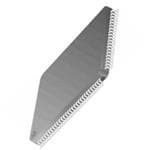
 Datasheet下载
Datasheet下载

